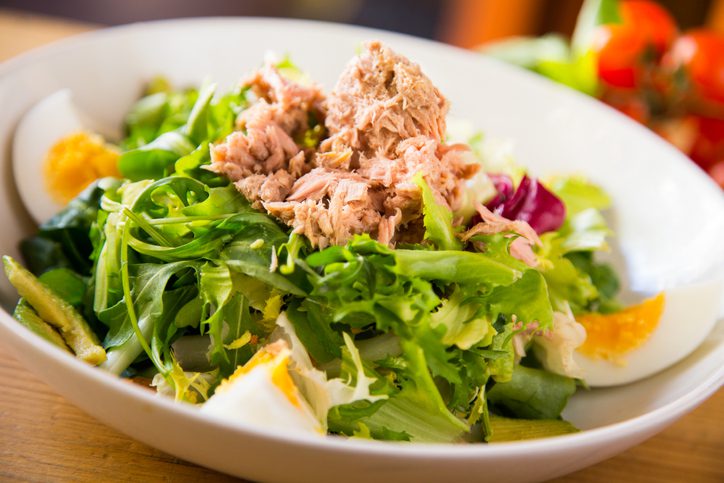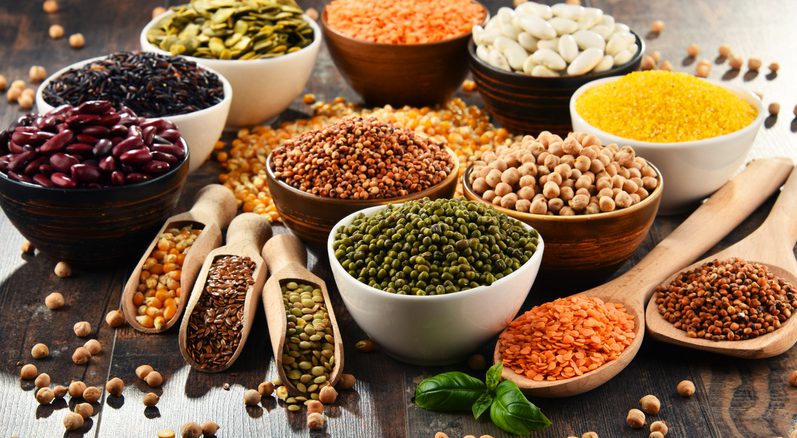Eating less (or no) red meat? Tips to avoid iron-deficient anemia
Avoid performance problems like fatigue by ensuring you're getting enough iron in your diet

- My teammate eats ice chips like crazy. Isn’t that a sign of being anemic?
- Something must be wrong with me. I get out of breath just walking up a flight of stairs…
- Should I eat lots of spinach to boost my iron intake, given I’ve stopped eating red meat?
Many of today’s runners and triathletes are eating little or no red meat (such as beef, lamb), which is one of the best sources of dietary iron. These athletes—in particular, dieting runners who eat less food overall—are simultaneously consuming less iron. Iron is a mineral found in the hemoglobin molecule inside red blood cells. It helps transport oxygen from your lungs to your muscles. Iron deficiency contributes to anemia, with symptoms of unusual fatigue while training—or even when climbing a flight of stairs. Runners with anemia may complain about light-headedness, weakness, sub-par performance, and yes, a desire to chew on ice! While fatigue can also be caused by lack of sleep, depression, stress, and calorie restriction, fatigue due to an iron deficient diet is common.
Iron deficiency anemia is more prevalent among athletes, particularly endurance runners, than among the general population. That’s because athletes lose iron with heavy sweating, blood loss in urine or via the intestinal tract, and damage to red blood cells caused by footstrikes while running. Female athletes lose blood via monthly menstruation, hence women are more prone to becoming anemic than are men. This study shows just how prevalent the problem is among runners: A survey of 277 everyday runners (~60% females; average age, 40 years) participating in the Detroit Free Press Half- or full Marathon indicates ~50% of the women and 15% of the men had clinical iron deficiency. 15% of the women and 3% of the men had severe iron deficiency. Just think how much faster these athletes could have run!
Avoid these three triathlon nutrition mistakes for a better 2024
What to do:
If you think you might be anemic, get your blood tested to rule out anemia (and remeasure it in 6 to 8 weeks after treatment). The diagnostic criteria are:
- hemoglobin (the iron-containing molecule within the red blood cell) is less than 120 (female) or 130 (male) g/L
- ferritin (a marker of iron stores) is less than 12 ng/mL (Ferritin should be >30-40, if not higher),
- transferrin saturation (transferrin binds iron in the blood) is less than 16%
Preventing and/or resolving anemia:
If you rarely consume iron-rich beef and lamb, be sure to consume alternate sources of iron, such as dark-meat chicken or turkey (legs, thighs), tuna or salmon. About 40% of the heme-iron in animal protein is absorbed, as compared to only 5% of the non-heme iron in plants. Don’t count on plant sources of iron such as almonds, spinach, lentils, beans and grains to satisfy your iron needs! Only about 2% of the iron in spinach might get absorbed. Despite Pop-Eye’s claim that spinach made him strong to the finish, spinach is a poor source of absorbable iron. Combining heme-iron in animal protein with non-heme (plant) iron optimizes absorption. Hence, add some tuna to your spinach salad, turkey to lentil soup, beef to chili.

If you are a runner who “eats clean” and minimizes your intake of “white foods” (such as white bread, pasta and rice), take note. Refined grains are generally enriched or fortified with iron. Hence, eliminating enriched white bread and other refined grains reduces your intake of iron (as well as other added nutrients). The US Dietary Guidelines recommend eating at least half your grains as whole grains, while the Canada Food Guide suggests that whole grain foods are the healthier option, too. Enriched white pasta and breads do offer important nutrients!
Enriched breakfast cereals, such as Quaker Oat Squares, All-bran, and Life, are good sources of iron. (In comparison, “all natural” cereals, like granola or Kashi, have no additives. That means, they have no added iron.) To enhance the absorption of the iron in enriched cereals, include a source of vitamin C with the meal — such as an orange or orange juice, a clementine, or some strawberries.
Research indicates iron tends to be absorbed better in the morning than in the evening. This is due, in part, to the daily fluctuation of the hormone hepcidin. Hepcidin hinders iron absorption from the intestinal tract and is a key regulator of iron absorption. Hepcidin increases after exercise, triggered by exercise’s inflammatory response. Hence, to optimize your iron absorption, pay attention to when you eat iron-rich foods or take an iron supplement in relation to when you exercise. A good time to consume iron or iron supplements is with an iron-rich breakfast either before or shortly after a workout, but NOT 3 to 6 hours afterwards, when hepcidin peaks. This timing will optimize iron absorption as well as tolerance, given iron supplements are better tolerated when taken with food.
Iron supplements
If you are anemic, you want to boost your dietary iron intake. You will also need to take supplemental iron to correct the deficiency. Do not self-prescribe high doses of iron supplements. Your doctor should prescribe the dose best for your body. Taking too much iron puts some athletes at risk of iron-overload, which is dangerous.
Supplements come in two forms: Ferrous iron (gluconate, sulphate, fumerate) and ferric iron (citrate, sulphate). Ferrous is better absorbed from the gut, but ferric iron settles better in the gut. Some runners find iron supplements contribute to nausea and constipation. If that’s your case, you want to experiment with different brands to find the supplement your body tolerates best. Slow-release ferrous sulphate and ferrous bisglycinate are popular choices. Taking an iron supplement every other day is as effective as taking it daily.
The bottom line
To iron out performance problems such as needless fatigue, be sure your diet supports your athletic goals. A registered dietitian (RD) who is a certified specialist in sports dietetics (CSSD) can teach you how to consume an optimal diet that helps you be strong to the finish (with or without the spinach)!
Reference: Kohler L et al. Prevalence of iron deficiency in endurance runners: a cross-sectional study of the Detroit Free Press Marathon and Half-marathon athletes. Blood (2022) 140 (supplement):11074-11075
Nancy Clark MS RD CSSD counsels both fitness exercisers and competitive athletes in the Boston-area 617-795-1875). Her best-selling Sports Nutrition Guidebook is a popular resource, as is her online workshop. Visit NancyClarkRD.com for more info.
